Introduction
The Covid-19 disease pandemic has changed the way work is carried out. Remote working, previously mostly a benefit for specific occupations, has become a necessity and a challenge for the future in new organisational arrangements in workplaces where it is possible. The experience with remote working during the pandemic has raised the demand among employees for type of work in the future and in the context of the current labour market situation, where the shortage of labour forces employers to contest for suitable quality candidates with various benefits (Aon, 2021). The energy crisis, which requires employers to consider the importance of cost management, will require us to take into account the requirements of employees and establish rules both legislative and within the internal regulations of organizations.
At present, the Labour Code does allow for the performance of work outside the employer’s workplace and specifies rules for the scheduling of working time and payment of compensation for this type of work, but these provisions do not cover all aspects of the off-site work environment.
The most problematic area of remote working is the provision of occupational safety and health (OSH) outside the employer’s workplace. Already in 2017, the issue of compliance with OSH rules when working from home was dealt with by the Research Institute of Occupational Safety, v. v. i. within the framework of the TA CR project Methodology for managing home office work (Senčík et al., 2017).
The employer is in a disadvantageous position when trying to comply with all OSH provisions; as they are still responsible for the safe performance of the employee’s work but cannot check his working conditions without the employees’ consent. Another ambiguity concerns the employer’s obligation to create working conditions for the performance of work, which, according to the interpretation of the General Financial Directorate, includes allowances for energy, water, gas, or Internet payments (Novinky.cz, 2021a), but nowhere is the methodology for calculating these allowances laid down.
The remote working allowance issue, which was a grateful benefit during the pandemic (Novinky.cz, 2021b), is becoming a necessity in the context of the energy crisis. Employers and employees alike are waiting to see what the amendment to the Labour Code will look like, which should provide lump-sum compensation for remote working (Seznamzpravy.cz, 2022).
If the employees do not work in their nominal workplace but anywhere else, it is possible to use several expressions for this type of work, for example, telecommuting work, telecommuting, and remote working. For working from home, the term home office is used. The general term WFH (work from home) or remote work is also used. For the purposes of this article, all the terms are used for both working from home and from another location outside the employer’s regular workplace.
The issue of remote working is not new in practice; one of the last studies before the pandemic, a study by the Research Institute of Labour and Social Affairs on New Forms of Employment in the Czech Republic (Kyzlingová et al., 2019), shows that at the time of this research 14 % of employees had experience with mobile work (this term is used in the study in the sense of work based on information and communication technologies, where employees can work with the support of modern technologies from any place and at any time).
It is clear that remote working is not possible in all sectors and for all types of work. Even for jobs where the conditions and resources needed to do the job would allow it, typically office work on a computer, it is not always possible. For example, clerical or customer service workers, for whom the nature of the job is to have daily direct contact with people, are not able to work remotely.
The question of the suitability and feasibility of working from home was addressed in the 2021 Labour Force Survey in the Czech Republic (Bajgar et al.,2021), when a refinement survey was conducted based on the principles of the 2020 international survey (Dingel & Neiman,
2020). According to the results of this study, 34 % of workers in the Czech Republic can work remotely. According to the authors, this is an upper estimate of the proportion of workers who can work remotely in full. However, it is not known how many workers can in part work remotely, in a so-called hybrid model. In particular, the qualitative side of the use of hybrid work was explored in a study in Austria (Beno, 2021), where it was shown that a hybrid model of work, as opposed to a workplace-only model of work performance, leads to greater job positivity, efficiency and variability.
A research report by Eurofound (eurofound, 2020) based on a survey conducted in 2020 during the first wave of the pandemic in several phases showed that, already in July 2020, just a few months after the pandemic broke out, 48 % of employees had experience of remote working, of which 14 % had a full remote working experience. It is also interesting to note that for 46 % of employees, this was their first experience of remote working.
The most extensive research on remote working in the Czech Republic was conducted by the Evaluation Department of the Ministry of Labour and Social Affairs in 2020 (Zykanová et al., 2020), followed by a comparative study in 2021 (Zykanová et al., 2021). The initial survey, given that it was conducted in mid 2020, looked at the respondents’ current experiences of working from home enforced by the Covid-19 pandemic, in addition to the setting of rules for working from home before the pandemic and the prospects for working from home in the future. The employees interviewed rated the positives and negatives of working from home, as well as the subaspects of work that were affected by the situation.
The follow-up survey in 2021 no longer looked at the situation before the pandemic but focused on the current set of rules for home working, staff evaluation, and the potential for home working in the future. The results were not significantly different from those obtained in 2020. A significant proportion of respondents anticipate greater use of home work in the future, regardless of extraordinary situations.
The main aim of this article, which focuses on a specific group of civil servants, is to find out their attitudes toward remote working. In particular, it was investigated what factors influenced the use of remote working during the pandemic, what
experiences of remote working were prevalent among employees and what influenced these experiences, and, last but not least, the attitudes of employees toward the use of remote working in the future were mapped.
The questionnaire survey was conducted only among employees to evaluate their views on the different aspects of remote working; it did not deal with how their employer specifically has set up conditions for remote working, which can significantly influence employees’ attitudes.
The first part of the article presents the theoretical background of the issue, that is, the experiences and attitudes of the employees. This is followed by a description of the research method and the formulation of the research questions. The next part contains the evaluation of the data obtained, the answers to research questions, and a discussion of the results. The last section contains a summary, limiting conditions of the research, and suggestions for future research.
Methodology and Data
The basic method for fulfilling the main objective of the article, to find out the attitudes of civil servants towards remote working, was a questionnaire survey. The online questionnaire, which was dominated by questions offering one or more response options, was sent to individual government institutions for further distribution. It is not known how many respondents the questionnaire was distributed to, so it is not possible to determine the return rate. The survey was carried out from 21. 4. to 31. 5. 2022. A total of 246 responses were obtained.
In addition to questions about employee attitudes toward remote working, the questionnaire also included questions to determine the impact of remote working on organisational culture and employee engagement. For the purposes of this article, only responses related to employee attitudes and experience with remote working were used.
The main objective of this paper, which focuses on a specific group of civil servants, is to determine their attitudes toward teleworking, not to test related research hypotheses. The article is designed as an analysis of the results of a questionnaire survey that was not conducted on a sample that complied with the probability of random sampling conditions. For this reason, descriptive statistical methods related to the research questions presented in this article were chosen for the analysis.
The association analysis of two categorical variables (i.e., gender, age categories, position in the organizational structure, and opportunities to telework prior to the pandemic) was performed using visualization. The analysis of multiple-choice questions is supplemented by relative frequencies (%) related to the number of respondents in parentheses. The conclusions drawn from the quantitative study were then evaluated using comparative analysis and the analysis of published information.
Based on the objective above, 3 research questions were formulated: Q1: What factors influenced the use of remote working during the pandemic? Q2: What experiences of remote working during the pandemic were prevalent and how were they influenced? Q3: What is the attitude of employees towards the use of remote working in the future? Research question Q2: was supplemented with subquestions Q2a: What were the most common positives of remote working? Q2b: What were the most common negatives of remote working? Q2c: What were the most common reasons why employees did not use remote working during the pandemic?
For all research questions, it was assessed whether the gender and age of the employee, the employee’s position in the organizational structure (whether he/she is a subordinate or a manager), and the opportunities for remote working before the pandemic (i.e., whether or not there was already experience with this type of work in the workplace) influenced the response.
Results
Factors influencing remote working performance during a pandemic
The use of remote working, either fully or partially (hybrid), that is, a combination of office and remote working, was used to some extent by most organizations during the pandemic. In the case of offices, this could not be used fully, as some agendas could not be handled remotely, but by personal contact between clients and staff. However, 82 % of the respondents were able to work remotely in full or hybrid mode during the pandemic. Organisations used this type of work, in part due to the recommendation of the Ministry of Health, due to the limitation of face-to-face contact between employees, but also to allow employees who had to stay at home due to quarantine requirements or childcare to continue performing their work. Although the system allowed these employees to receive sickness benefits, it was more advantageous for both parties, employers and employees, to use home working when the nature of the work permitted it. The employer did not have to deal with the reallocation of work for the absent employee, which in some cases was not even possible; on the other hand, the employees did not have to deal with a reduction in income, nor did their backlog of work accumulate for the time after their return to the workplace.
One of the factors that may have influenced the use of remote working was the gender of the employees. As the ratio of female and male respondents was almost equal (51 % female 49 % male), it is possible that we obtained objective information regarding gender from the survey.
Today, as historically, the management of the household and childcare is more of a demand on the women’s duties (Dalton & Groen, 2022), so it was not surprising that remote working was used more by women who were able to combine demands of both work with the requirements of the household and childcare.
Survey data showed that more than twice as many women as men used full remote working, but the difference in the total number of women and men who used full or partial remote working was only 2 % (see Fig. 1.)
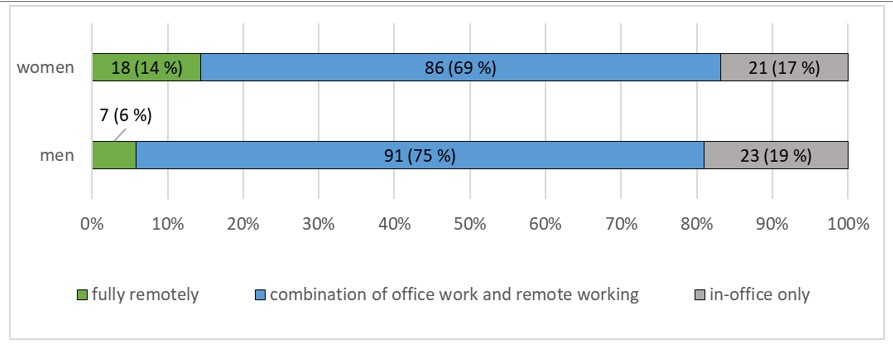
Fig. 1. Visualization of the association of type of work during the pandemic and gender
In terms of age, there are two categories whose share of working from home is comparable. These are the 26-41 age category, where care for younger children is expected, and the 58-76 age category, which was the generation most at risk of Covid-19. In contrast, the proportion of people working only full-time in the office was roughly double that of these two categories, in the age category of 42-57. Respondents in the under-26 and 76+ age categories were not considered due to their unrepresentative number of respondants (see Fig. 2.).
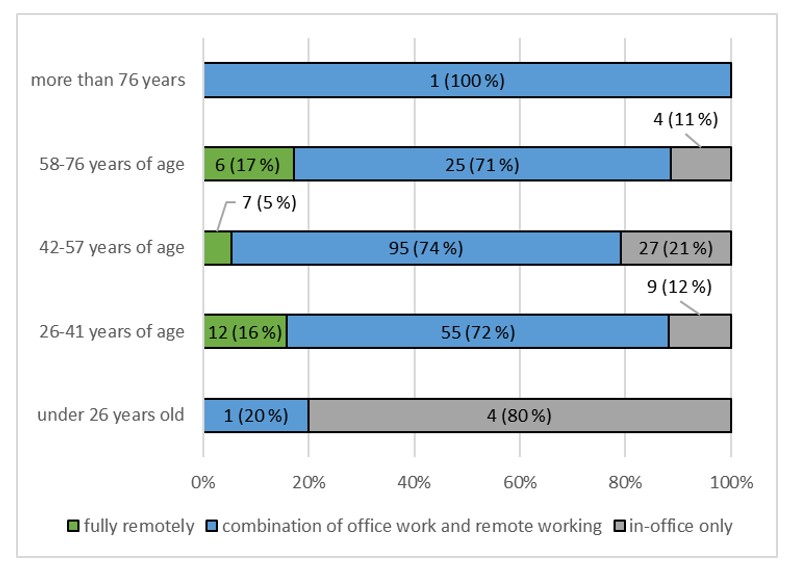
Fig. 2. Visualization of the association of the type of work during the pandemic and age
One of the other aspects that may influence the use of remote working is the position of the respondent in the organisational structure of the workplace, i.e., whether he or she is a subordinate employee or a manager who assigns and controls the work of others. Managers accounted for 25 % of the sample. The responses showed that managers used remote working or hybrid working to a lesser extent than subordinate employees, but the difference was only in the order of percentages (see Fig. 3.), suggesting that managers learned to manage and control the work of their subordinates remotely at least partially during the pandemic, or were forced to do so by circumstances.
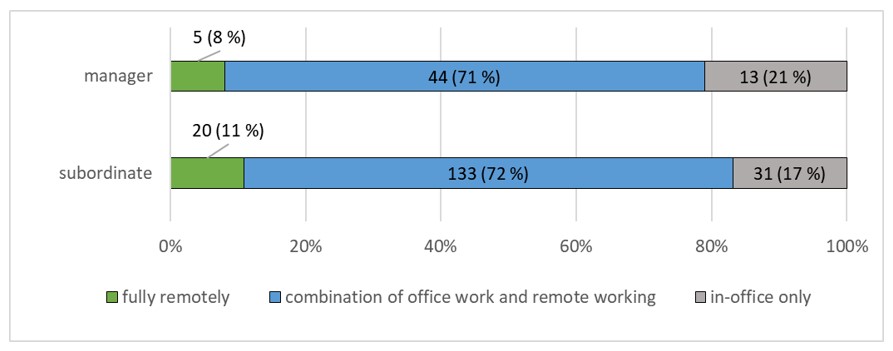
Fig. 3. Visualization of the association of the type of work during the pandemic and the position
One of the factors that influenced the extent to which employees were allowed to work from home was whether the workplace had specific experience with this method of working prior to the pandemic, i.e., had some formalised rules for doing this work.
According to the questionnaire survey, remote working was the most common in workplaces that had already used remote working prior to the pandemic and the least common in workplaces that had no experience with this method of working.
In general, remote working, or at least a combination of office and remote work, was more likely to be used by employees (87 %) in workplaces that already routinely supported remote working before the pandemic, and to a large extent (84 %) in workplaces that rarely offered remote working before the pandemic, but had some experience with this type of work. The lowest proportion of employees who used remote working during the pandemic was in workplaces that had no previous experience using this method of work and did not have rules to govern it. However, even these workplaces were forced to adapt to the pandemic situation, and even remote working was used fully or partially in 75 % of cases during the pandemic (see Fig. 4.).
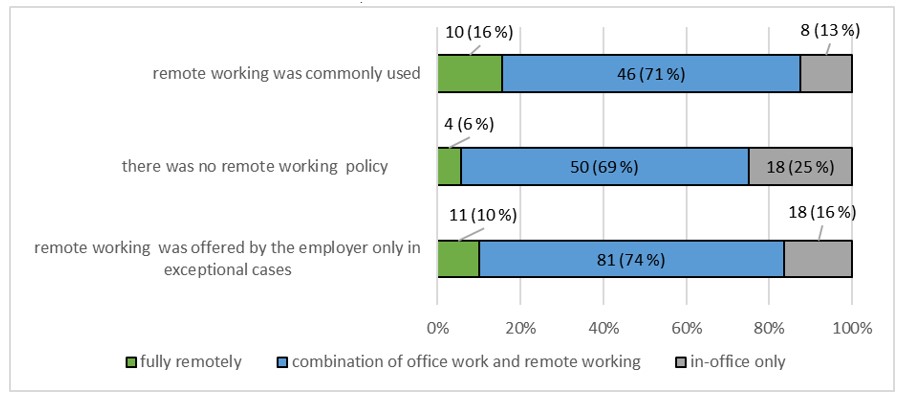
Fig. 4. Visualization of the association of type of work during the pandemic and remote working policy before the pandemic
Experience of remote working during the pandemic
An important outcome of the questionnaire survey was to find out what experiences the respondents had with remote working during the pandemic, whether positive or negative experiences prevailed and whether they had previous experience working from home. It also considered the gender, age, and employment status of the employees in these experiences. According to the data obtained, it can be assumed that some respondents also assessed the experience of working from home, probably in the context of collaboration with colleagues, in
the group of employees who did not use remote working. From the information, it is also possible to trace the order of positives and negatives as perceived by the employees interviewed, as well as the reasons why they did not use the option of working from home.
Overall, more than half of the respondents had positive experiences with remote working. One in six did not use remote working and the same portion of the respondents had negative experiences. In terms of gender, positive experiences predominated among women, while half as many men as women had negative experiences working from home during the pandemic (see Fig 5.).
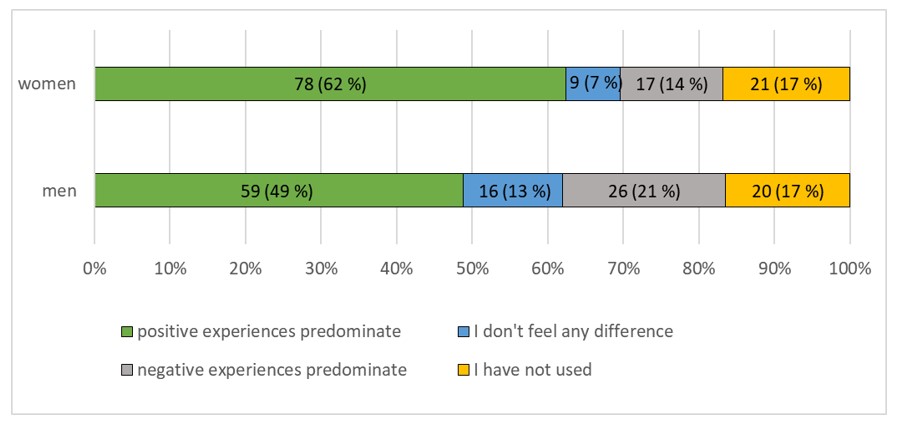
Fig. 5. Visualization of the association of remote working experience and gender
The age factor also influenced the satisfaction with working from home, with employees in the 26-41 age category being the most satisfied, followed by the 58-76 age category, and employees in the 42-57 age category being the least satisfied. This age category was also the least likely to use remote working (see Fig. 6.). Respondents in the age category under 26 and 76+ were not considered due to their low number of respondents.
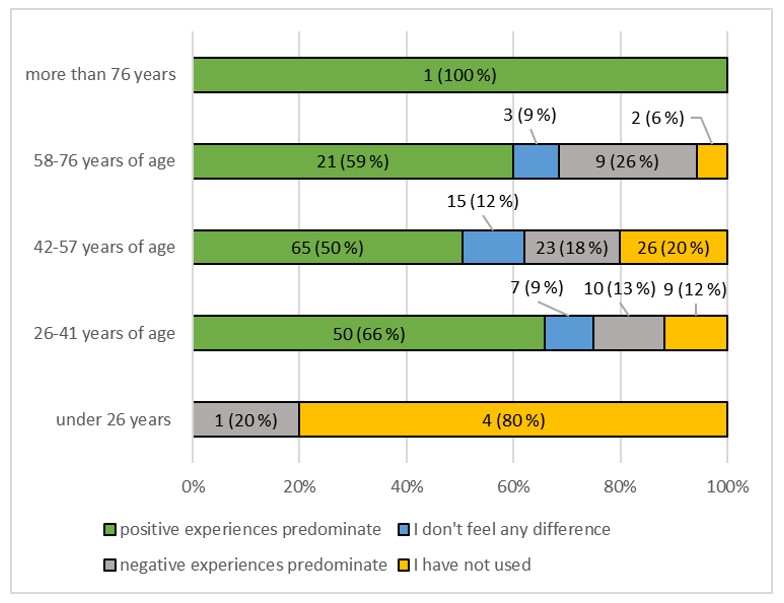
Fig. 6. Visualization of the association of remote working experience and age
In terms of the position of employees in the organizational structure, positive experiences were significantly more prevalent among subordinates. There was a higher proportion of managers who had negative experiences of working from home or felt no difference (see Fig. 7.). This lower level of dissatisfaction with remote working among managers is probably due to the still prevailing ‘management by control’ approach, where the physical presence of the employee at the workplace and the possibility of personal contact between the manager and the subordinate give the impression of greater control over performance of work (Szumilo & Wiegelmann, 2021) and give the impression of a better job done. Today, and especially in view of the greater extent of remote working in the future, there will be a need to move towards ‘management by results’, which will allow for more autonomy and flexibility for employees, while at the same time freeing managers from the feeling of having to constantly check and monitor the outputs of their subordinates’ work (Tomei, 2021).
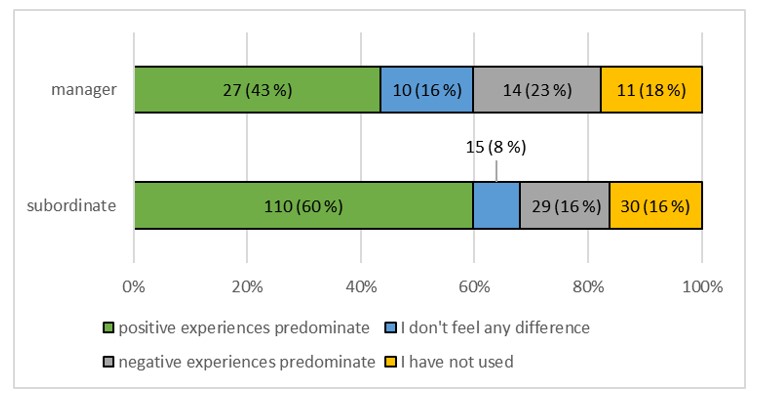
Fig. 7. Visualization of the association of remote working experience and position
In terms of previous remote working experience that employees had the opportunity to gain in the prepandemic period, workplaces where remote working was already routinely, or at least in some cases, offered by the employer are comparably rated. On the contrary, the most negative experiences of remote working during the pandemic were among employees for whom remote working was not offered at all by their employer in the pre-pandemic period and for whom it was a completely new way of working. The group of employees who did not perceive a difference between working from home and in the office was the group of respondents who already used home working routinely before the pandemic (see Fig. 8.).
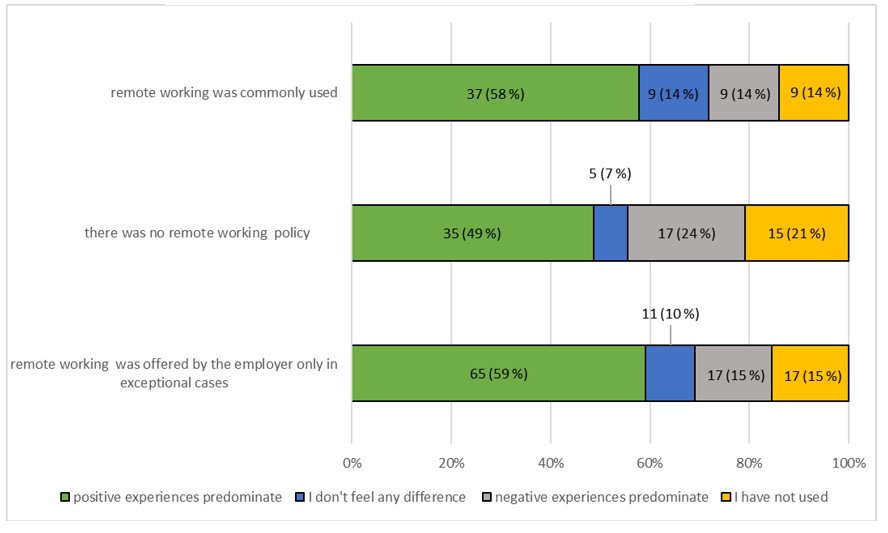
Fig. 8 Visualization of the association of remote working experience and remote working policy before pandemic
Positives and negatives of remote working during a pandemic and reasons for not using it
The most frequent positives were related to time or finances. Saving commuting time was the most valued benefit, with 91 % of respondents reporting this benefit almost equally for both genders. This factor also has a larger impact on society, particularly through reduced traffic congestion and CO2 emissions. Another benefit is the opportunity to spend the time saved on family and leisure activities, which is one of the desirable aspects of work-life balance. Flexibility was mentioned in the second place, where remote working allows employees to spread their work, or working hours, to a certain extent (depending on the employer’s control mechanisms and rules) according to their needs and possibilities, which was particularly appreciated by women, who were able to take care of their children, who stayed at home during the pandemic when schools were closed (Rappaport, 2020), or when they were sick or quarantined. The financial aspect of working from home, i.e., saving on commuting and food costs, was ranked third.
Of the benefits related to work itself, the increase in autonomy, responsibility, and efficiency was positively evaluated in half of the cases, but only 30 % of the cases were evaluated as productivity gains and 26 % as skills development.
In terms of gender, preferences were almost identical, differing only in the areas of finances (more men highlighted cost savings), the need to devote more time to appearance (more women valued this) and skills development (9 % more men than women valued this benefit of remote working) (see Fig. 9.).
When comparing the results with the results of the 2021 employer survey conducted by the MLSA (Zykanová et al., 2021), saving time on commuting is consistently ranked first, and flexibility is also ranked highly. Similar results have been found in surveys in other countries and in other sectors (e.i. Anguelov & Angelova, 2021).

Fig. 9. Visualization of the association of benefits of remote working during a pandemic by gender
The ranking of the benefits of remote working in relation to the position of managers and subordinates yielded different perceptions, especially for labour productivity, where 32 % of subordinates but only 23 % of managers valued higher productivity when remote working, while 32 % of managers but only 24 % of subordinates valued the prevention of conflict among colleagues.
The biggest negatives of remote working were the lack of face-to-face contact and the feeling of being online all the time, with more than half of the respondents also citing rising household costs, distractions from other family members, and connectivity issues (see Fig. 10.).
The issue of lack of social contact was clearly one of the most significant problems during the pandemic, regardless of whether it was colleagues or family members (Galanti et al., 2021).
The feeling of being online all the time may have been related to the fact that the form of remote working was unfamiliar to most people; many employers did not have set rules for this type of work.

Fig. 10. Visualization of the association of the downside of remote working during a pandemic by gender
Regarding the reasons for not using remote working during the pandemic, for most employers, it was to deal with a current situation for which they were not prepared, either procedurally or technically; the most common reasons given were related to the lack of technical equipment and the employer’s approach to remote working. Women were more likely to be dissatisfied with the fact that their employer did not support remote working and were also more likely to cite an inadequate home background (see Fig. 11.).
In the survey of the Ministry of Labour and Social Affairs (Zykanová et al., 2021), the first two places were occupied by the factors of the inappropriate workload and the fact that the management of the organisation does not support remote working, so it can be concluded that the reasons were similar to the results of our survey.

Fig. 11. Visualization of the association of reasons for not using remote working during a pandemic by gender
Employee attitudes towards the use of remote working in the future
Most employees, regardless of what their employer’s remote working policy was before the pandemic, would value a hybrid model in the future, that is, a combination of office-based and remote working. Only 14 % of women and 7 % of men would prefer to work fully remotely in the future (see Fig. 12.).
In terms of gender, the hybrid model was preferred equally by men and women. On the contrary, twice as many women as men would prefer to work only remotely in the future.
Fig. 12. Visualization of the association of the attitude of employees towards the use of remote working in the future by gender
Remote working only would be most appreciated in the future by employees aged 26-41 (see Fig.13); there is a clear link to parenthood as this age group represents the largest number of parents of children who need care, especially in case of illness or school holidays.
Fig. 13. Visualization of the association of the attitude of employees toward the use of remote working in the future by age
Only 5 % of managers would support full remote working in the future, while 13 % of subordinates would be interested. On the contrary, 42 % of managers but only 23 % of subordinates would support full-time office work (see Fig. 14.). This is probably related to the aforementioned need for control by managers.

Fig. 14. Visualization of the association of the attitude of employees toward the use of remote working in the future by position
Employees whose organisation fully or partially supported remote working in the prepandemic period were slightly more likely to prefer hybrid working in the future, compared to those whose employers did not support remote working in the prepandemic period. This group, in turn, would be more likely to support full-time office work in the future (see Fig. 15.).

Fig. 15. Visualization of the association of the attitude of employees toward the use of remote working in the future by the remote working policy before the pandemic
Discussion
The results of the questionnaire survey showed basic facts that may help establish rules for remote working in individual workplaces in the future. These included experiences with remote working and possible barriers to its use. There is also a strong interest in its further use in the future.
According to the results, the use of remote working during the pandemic was influenced by whether the employer had established rules for remote working before the pandemic, as well as the sex and age of the respondents. The position of the respondents in the organisational structure had a negligible effect on the use of remote working.
Positive experiences were prevalent among respondents regardless of gender and age or the possibility of remote working prior to the pandemic. There were lower rates of positive experiences only among managers, compared to subordinate employees. The biggest benefits were time and financial savings on commuting and flexibility, i.e., the ability to organize time for work according to individual employees’ needs and constraints. However, social isolation was perceived mainly negatively, leading to the perception that the so-called hybrid work, that is, a combination of on-site and remote working, would gain the greatest preference in the future, while interest in remote working was only low.
Conclusions
This paper has focused on the issue of attitudes of civil servants towards remote working. It examined the factors influencing the use of remote working during the pandemic, employees’ experiences with remote working including the most common positives and negatives, and employees’ attitudes towards remote working.
The main methods used were content analysis and descriptive statistics with secondary classification by gender, age, position in the organization, and opportunities to remote working before the pandemic, as well as the comparison method. In addition, methods of analysis of published information were used.
The article focuses only on a certain type of employees in the Czech Republic, which limits to some extent the universal interpretation of its conclusions. According to the publications studied abroad and also another survey in the Czech Republic, it can be concluded that the data obtained in the survey do not differ significantly from the general trend.
Subsequently, an online questionnaire survey was conducted during April and May 2022. The initial sample included public administration institutions in the Czech Republic. A total of 246 responses were obtained. The results of the questionnaire survey answered the three formulated research questions as follows. The answer to the research question Q1 was the following: Factors that influenced the remote working experience were whether the employer had established rules for remote working before the pandemic, as well as the gender and age of the employees. The position of the employees in the organizational structure had little effect on the use of remote work. The answer to research question Q2 was that positive experiences prevailed among the respondents regardless of gender, age, or the possibility of using remote working before the pandemic. There was a lower rate of positive experiences only among supervisors compared to subordinates. The answer to the research question Q2a was that the biggest benefits included time and financial savings on commute and flexibility, i.e., the ability to organize time for work according to the needs and constraints of individual employees. The answer to research question Q2b was that the most significant negative was social isolation. The answer to research question Q2c was the following: the most common reasons for not using remote working were inadequate technical equipment and unsuitable workload. The answer to research question Q3 was that the greatest preference in the future would be for the so-called hybrid work, that is, a combination of on-site and telework, while interest in remote working only was low.
The limitations of the survey are reflected in the fact that it was not possible to determine returns, and generalisations of the findings should be taken with a grain of salt given the small sample size and the specific research setting in one country. Future research can build on the results of this research, which can be considered as a pilot in the segment. The authors see another direction for research, focusing on other organisations and verifying other contexts that have had or may have an impact on the use of remote working.
In conclusion, we can say that public administration institutions have more or less successfully coped with remote working performance, positive attitudes prevailed among employees, and there is a significant proportion of people demanding that the hybrid way of working be maintained in the future. It is now a challenge, in particular, for the government to regulate this option in future legislation and for employers to allow employees to work in this way, where operational conditions allow it, as part of their internal rules.
Acknowledgements
This article was created within the project of the Student Grant Competition SP 2022/93 entitled „The impact of remote working on organizational culture and its association with other aspects of work in the context of a pandemic situation”.
References
- Anguelov, K. and Angelova, M. (2021). ‘Home office effects on the motivation of ICT companies’ employees,‘ Enterpreneurship and Sustainability Issues, 8(4),10-28.
- (2021). ‘2021 and beyond: Looking at the future of employee benefits in a post-COVID world,‘ [Online]. [Retrieved June 8, 2021], https://www.aon.com/unitedkingdom/employee-benefits/resources/articles/the-future-of-employee-benefits-post-covid.jsp
- Bajgar, M., Janský, P., Šedivý, M. (2021), ‘How Many of Us Can Work from Home? Evidence for the Czech Republic.‘ Politická ekonomie [Online]. [Retrieved July 12, 2022]. https://doi.org/10.18267/j.polek.1329, 69 (5), 555-570
- Beno, M. (2021), ‘On-Site and Hybrid Workplace Culture of Positivity and Effectiveness: Case Study from Austria‘. Academic Journal of Interdisciplinary Studies [Online]. [Retrieved June 28, 2022]. https://doi.org/10.36941/ajis-2021-0142, 10 (5)
- Dalton, M. and Groen, J. A. (2022), ‘Telework during the COVID-19 pandemic: estimates using the 2021 Business Response Survey. Monthly Labor Review,S. Bureau of Labor Statistics [Online]. [Retrieved July 12, 2022]. https://doi.org/10.21916/mlr.2022.8
- Dingel, J. I. and Neiman, B. (2020), ‘How many jobs can be done at home?‘ Journal of Public Economics [Online]. [Retrieved June 28, 2022]. https://doi.org/10.1016/j.jpubeco.2020.104235, 189
- (2020) ‘Living, working and COVID-19‘. Luxembourg: Publications Office of the European Union, COVID-19 series [Online]. [Retrieved June 28, 2022]. https://www.eurofound.europa.eu/sites/default/files/ef_publication/field_ef_document/ef20059en.pdf
- Galanti, T., Guidetti, G., Mazzei, E., Zappalà, S. and Toscano, F. (2021) ‘Work from Home During the COVID-19
- Outbreak. The Impact on Employees’ Remote Work Productivity, Engagementand Stres,‘ Journal of Occupational and Environmental Medicine, 63(7), 426-432.
- Kyzlinková R., Pojer P. et Veverková S. (2019), ‘New forms of employment in the Czech Republic‘ [Online]. Prague: Research Institute for Labour and Social Affairs, 2019 [Retrieved May 11, 2022]. https://www.vupsv.cz/download/nove-formy-zamestnavani-v-ceske-republice/?wpdmdl=6883&refresh=626eeeef7fef71651437295
- cz (2021a), ‘What expenses are you entitled to when working from home?’ [Online]. [Retrieved July 12, 2022]. https://www.novinky.cz/finance/clanek/na-jakou-nahradu-nakladu-mate-narok-pri-praci-z-domova-40362029
- cz (2021b), ‘Pandemic changes preferences for employee benefits‘. [Online]. [Retrieved July 12, 2022]. https://www.novinky.cz/finance/clanek/pandemie-meni-i-preference-u-zamestnaneckych-benefitu-40354239
- Rappaport, A. (2020). ‘Employee Benefits after COVID-19‘. [Online]. [Retrieved May 25, 2022], https://www.soa.org/globalassets/assets/files/resources/research-report/2021/employee-benefits-covid-essay.pdf
- Senčík, J., Nechvátal M., Tilhon J. et al. (2017), ‘Methodology for managing home office work‘. [Online]. Prague: Occupational Safety Research Institute, [Retrieved July 12, 2022]. https://www.mpsv.cz/documents/20142/650267/Rizeni_prace_provadene_formou_home_office.pdf
- cz (2022), ‘The State plans new rules and compensation for the home office‘. [Online]. [Retrieved September 6, 2022]. https://www.seznamzpravy.cz/clanek/ekonomika-b2b-nuti-vam-firma-praci-z-domova-dostanete-kompenzaci-rika-ministerstvo-213262#dop_ab_variant=0&dop_source_zone_name=zpravy.sznhp.box&source=hp&seq_no=2&utm_campaign=&utm_medium=z-boxiku&utm_source=www.seznam.cz
- Szumilo, N. and Wiegelmann, T. (2021). ‘Do You Really Need All that Office Space?,‘ [Online]. [Retrieved May 25, 2022], https://hbr.org/2021/07/do-you-really-need-all-that-office-space
- Tomei, M. (2021), ‘Teleworking: A Curse or a Blessing for Gender Equality and Work-Life Balance?‘. Intereconomics [Online]. 56(5), 260–264 [Retrieved August 1, 2022]. https://doi.org/10.1007/s10272-021-0995-4, 56(5), 260–264
- Zykanová T., Voslář V. et al. (2021), ‘Working from home 2021: employee and manager experiences‘. [Online]. European Union, European Social Fund, [Retrieved August 20, 2022]. https://www.esfcr.cz/documents/21802/14776072/Vyhodnocen%C3%AD+dotazn%C3%ADku+Pr%C3%A1ce+z+domova+2021.pdf/18a8e798-5bff-49eb-9c80-71ea62b99a0e?t=1634908096804
- Zykanová T., Voslář V., Veselková E. et al. (2020), ‘Working from home: experiences of staff and managers in the context of the increase in home working during the coronavirus pandemic‘, [Online]. European Union, European Social Fund, [Retrieved August 20, 2022]. https://www.esfcr.cz/documents/21802/14776072/Vyhodnocen%C3%AD+dotazn%C3%ADku+Pr%C3%A1ce+z+domova.pdf/99450e64-d6a5-453a-82ca-a5ddd1dd6b23?t=1601619949362


















